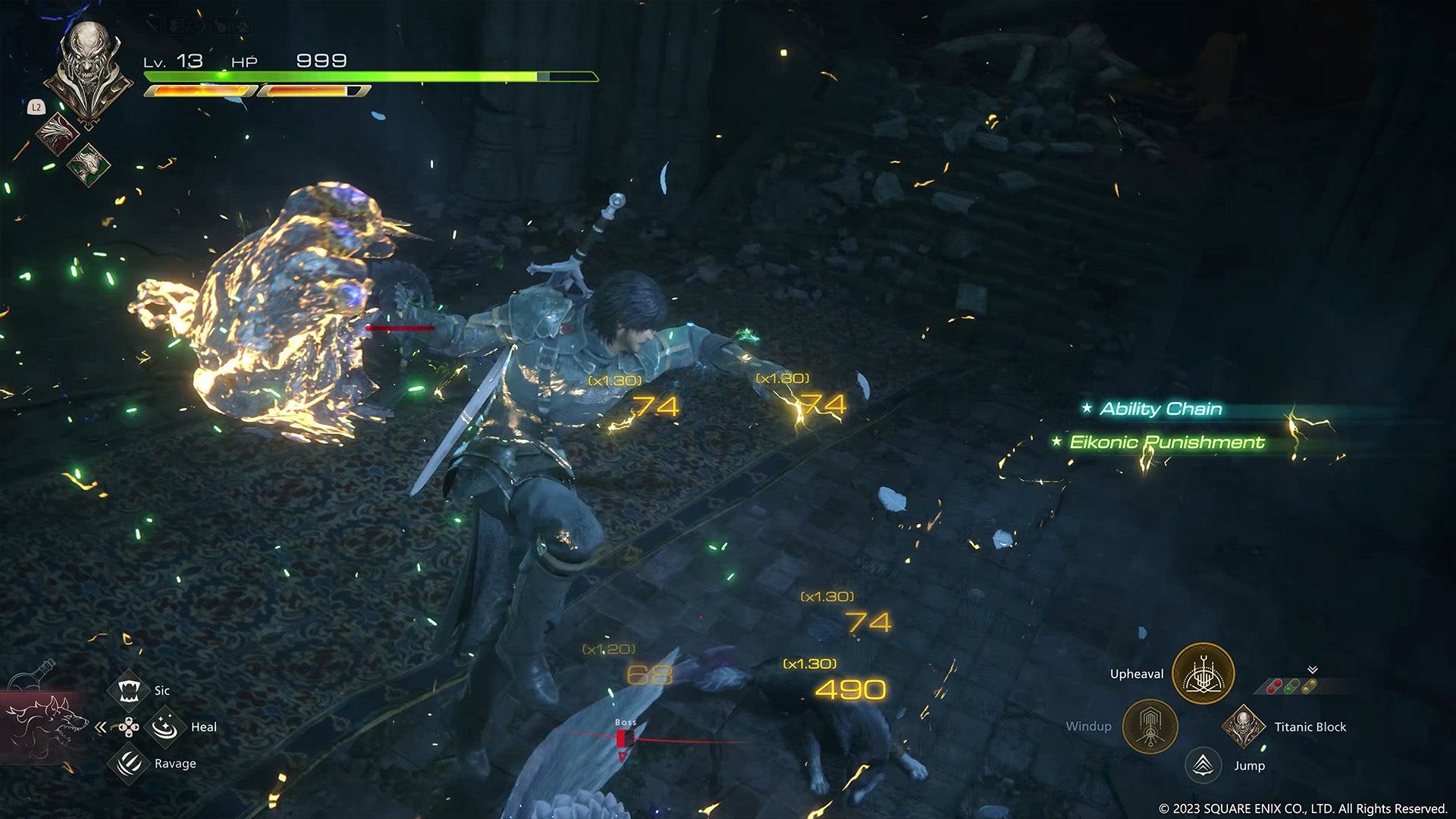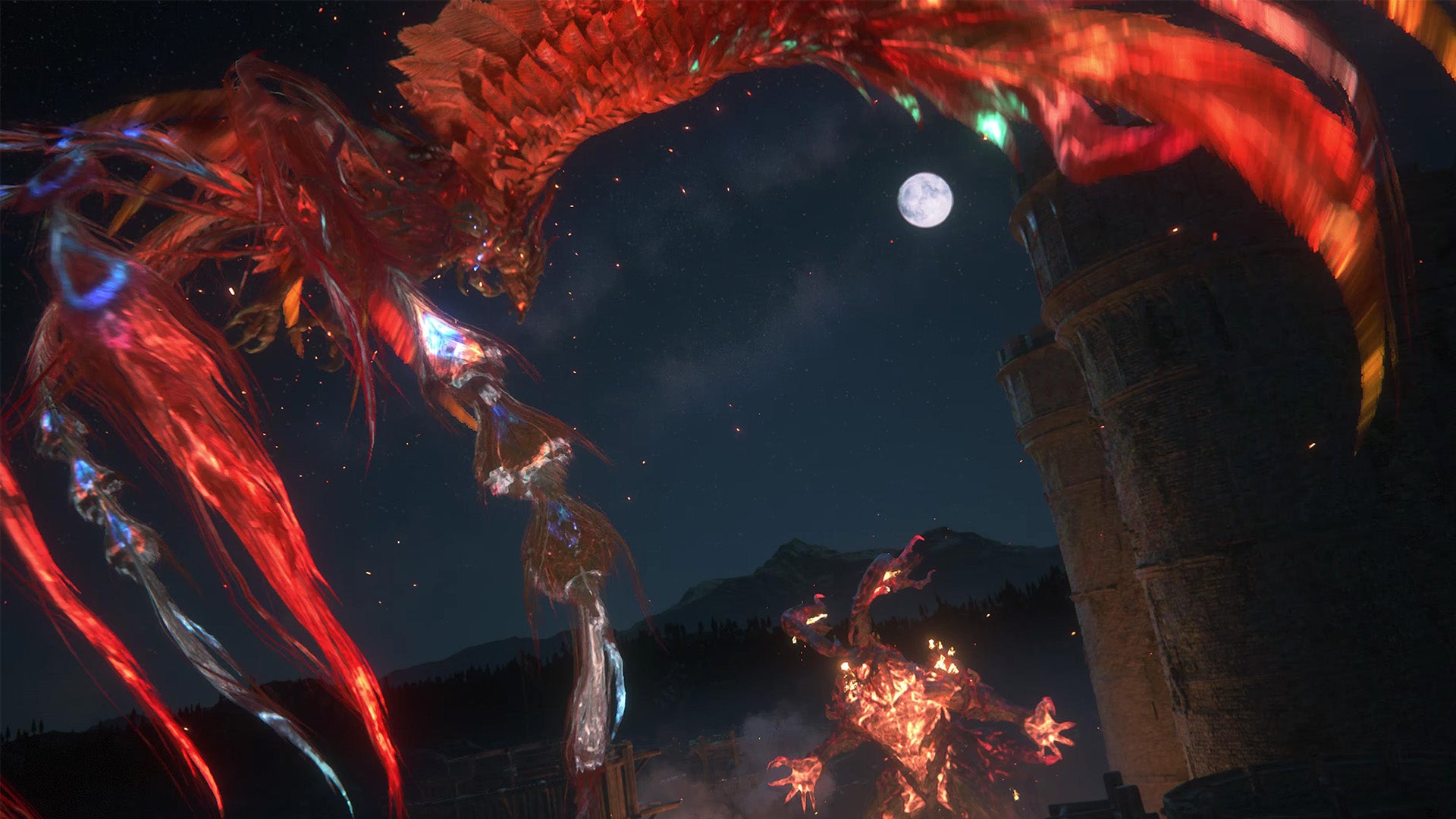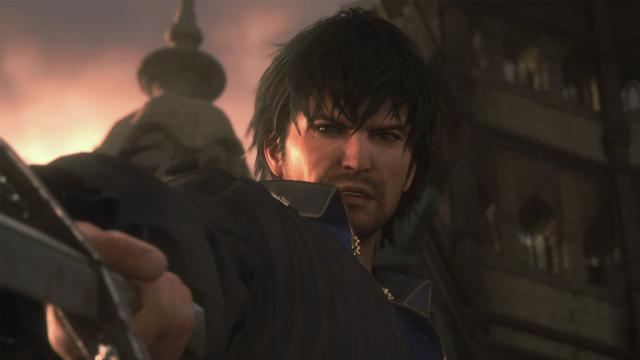For three decades the Final Fantasy franchise has been known for reinventing itself, whether it’s the cyberpunk-esque stylings of Final Fantasy VII or the push into online multiplayer with Final Fantasy XI. The next watershed moment for the franchise is here, with Final Fantasy XVI trying to push into a more mature and action-focused territory. While it mostly succeeds in its efforts, Final Fantasy XVI has certain features that feel like they’re in there simply because any game calling itself an “RPG” has to have them. Final Fantasy XVI goes a long way to redefine the franchise, but it needs to go just one step further in leaving its RPG roots behind.
In its bid to create the first true mainline action RPG for Final Fantasy, Square Enix hired Ryota Suzuki, the combat designer behind Devil May Cry 5. His expertise shines through in Final Fantasy XVI’s combat: It has tight combos, counters, move-cancelling, and a wealth of builds and play styles that you’d expect from a high-intensity action game.
Final Fantasy XVI’s lingering RPG systems
But along with the newer, more action-focused aspects, FF XVI still has a lot of features that you’d normally associate with the series, like a variety of weapons and armour you can craft and equip on protagonist Clive, a levelling system, and party members that are entirely passive. These are all features that you’d typically “expect” out of a Final Fantasy game, but the problem here is that they’re all paper thin. Your canine companion, Torgal, has a system for levelling up, but digging into it more reveals there’s no player interaction involved. Torgal levels as the story progresses, and all of those stats and gauges on his status screen have no direct meaning.

The crafting system feels equally shallow, as it throws hundreds of materials at you, but does a poor job of giving you varied ways to use them. After a big story moment you’ll typically unlock new weapon and armour choices that you can craft, and at any given time there’s no reason to picks something else than those new options. The kind of variety and player choice you see for customisation in other RPGs, say like The Witcher 3, simply isn’t there. It feels like Final Fantasy XVI wants the player to feel like they have choice when it comes to armour customisation, when in reality there is very little.
The same can be said for both the levelling system and your party members, which feel more like an afterthought than systems you’re actually participating in. Traditionally, the series has let you alter and customise an entire party of characters. Even Final Fantasy XV let you give equip new equipment or outfits to Noctis’ friends. A lack of a customisable party isn’t a problem considering the new gameplay style, but it feels odd that the game still designates Clive’s friends as “party members.” The idea of a party denotes some level of customisation, which isn’t present here.
The power of Clive’s Eikon abilities
The shallowness of these systems becomes even more apparent when you compare them to Clive’s Eikon abilities, which actually provide genuinely deep and meaningful customisation. Eikon sets unlock incrementally at major moments in the story, and each one grants Clive a new Feat and three new abilities. Feats are unique to each Eikon, for example the Phoenix Eikon can shift forward and teleport to an enemy instantly while Bahamut can charge up Megaflare to pelt the entire battlefield with magic for a period of time. Abilities, on the other hand, can be equipped to any Eikon set once you’ve spent Skill Points to master them.
The whole Eikon system is built around flexibility and player choice, giving you dozens of options for different builds.It’s a dynamic system that really makes Final Fantasy XVI’s combat stand out, and it’s unlike anything the series has seen before. It definitely feels more like the kind of skill tree you’d see out of typical action games like Devil May Cry or God of War. And that’s precisely the problem.
Final Fantasy XVI shines when it breaks new ground and offers something different than its predecessors, but a lot of its RPG elements feel superfluous and unnecessary. Sidequests and exploration feel meaningful to the narrative of Final Fantasy XVI, enhancing the world and characters. However, the more mechanical rewards behind both are lacking, as getting loads of crafting materials just don’t equal the narrative payoff you get. Those lacklustre rewards make sidequest feel uneven as a larger piece of the puzzle. Better rewards could have helped create an experience that feels satisfying on both the narrative and mechanical level.

The game would be stronger, as a whole, if more of those elements had been streamlined and stripped away, reinforcing its core action experience. Crafting is what feels the most unnecessary in Final Fantasy XVI, as the same idea could have been delivered by simply awarding players a new weapon for each big story boss, instead of creating something artificially complex. Similarly, there’s no need to create any kind of party label or explanation of Torgal’s stats. Complexity for the sake of it, doesn’t mean it’s good. . Final Fantasy XVI is a fantastic action game, but if you go into the experience looking for a complex RPG, you might be disappointed.
In an interview on Square Enix’s site in May 2023 Producer Naoki Yoshida talked about what it means to be a Final Fantasy game, saying “There’s no need to feel constrained by what’s come before.”
Final Fantasy XVI feels like it’s at war with itself. When the game shifts away to something fresh and new it’s magical, but it’s hard to overlook the lingering elements that feel like they’re there simply because it’s Final Fantasy. It’s a classic case of you can’t have your cake and eat it too, and it’s become abundantly clear Final Fantasy is going to have to make a complete break sooner or later.

Leave a Reply